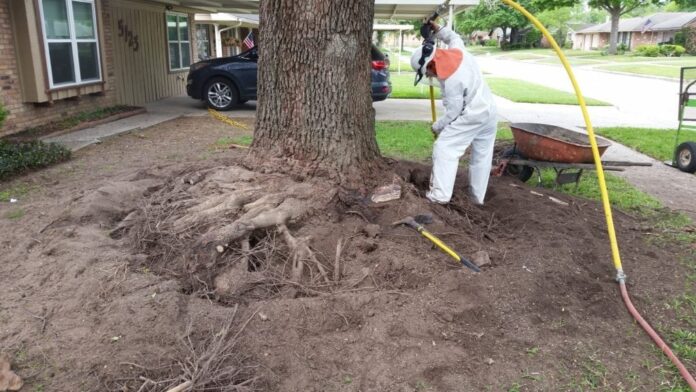Introduction to Airspade’s Soil Exploration
When it comes to soil exploration in landscaping, precision is paramount. Understanding the composition, structure, and health of the soil is essential for creating thriving outdoor spaces. Enter Airspade, a groundbreaking tool that combines precision technology with scientific principles to revolutionize soil exploration in the field of landscaping.
The Science Behind Airspade
At the heart of Airspade’s soil exploration capabilities lies a sophisticated understanding of soil physics and mechanics. Developed by experts in soil science and engineering, Air spade harnesses the power of compressed air to gently excavate soil layers, revealing valuable insights about soil composition and condition.
Key Components of Airspade’s Precision Technology
- Compressed Air Propagation: Airspade generates a high-velocity stream of compressed air that penetrates the soil with precision. This controlled propagation of air allows for targeted soil excavation without causing damage to surrounding vegetation or underground infrastructure.
- Soil Fracturing: As the compressed air enters the soil, it creates fractures and fissures within the soil matrix. This process, known as soil fracturing, facilitates the extraction of soil samples and exposes hidden features such as root structures, soil horizons, and geological formations.
- Pressure Regulation: Airspade is equipped with pressure regulation mechanisms that enable operators to adjust the intensity of the airflow based on soil conditions and project requirements. This level of control ensures optimal excavation results while minimizing the risk of soil disturbance.
- Precision Nozzle Design: The design of Airspade’s nozzle plays a critical role in its precision capabilities. Engineered to deliver a concentrated airflow, the nozzle allows operators to target specific areas of interest within the soil profile, maximizing efficiency and accuracy in soil exploration tasks.
Applications of Airspade’s Precision Soil Exploration
- Soil Sampling and Analysis: Airspade facilitates the collection of precise soil samples for laboratory analysis, providing valuable data on soil fertility, pH levels, nutrient content, and organic matter composition. This information guides soil management practices and informs decision-making in landscaping projects.
- Root Zone Investigation: By excavating soil around plant roots, Airspade allows for detailed inspection of root structures and health. This is particularly useful in diagnosing root-related issues such as compaction, rot, or pest infestation, enabling targeted interventions to promote plant vitality.
- Subsurface Utility Detection: Airspade can be utilized for non-destructive subsurface utility detection, helping identify the location of underground pipes, cables, and conduits without the need for invasive excavation methods. This enhances safety and efficiency in landscaping projects while minimizing the risk of utility damage.
- Soil Remediation and Rehabilitation: In contaminated or degraded soil environments, Airspade can be employed to facilitate soil remediation and rehabilitation efforts. By aerating the soil and promoting microbial activity, Airspade accelerates the breakdown of pollutants and restores soil health, supporting ecosystem recovery and environmental sustainability.
Conclusion
Airspade’s precision soil exploration capabilities represent a significant advancement in the field of landscaping and soil science. By leveraging scientific principles and innovative technology, Airspade empowers landscapers and soil professionals to gain unprecedented insights into soil composition, structure, and health. With its versatility and precision, Airspade is reshaping the way we understand and interact with the earth beneath our feet, driving forward the art and science of soil exploration in landscaping.


